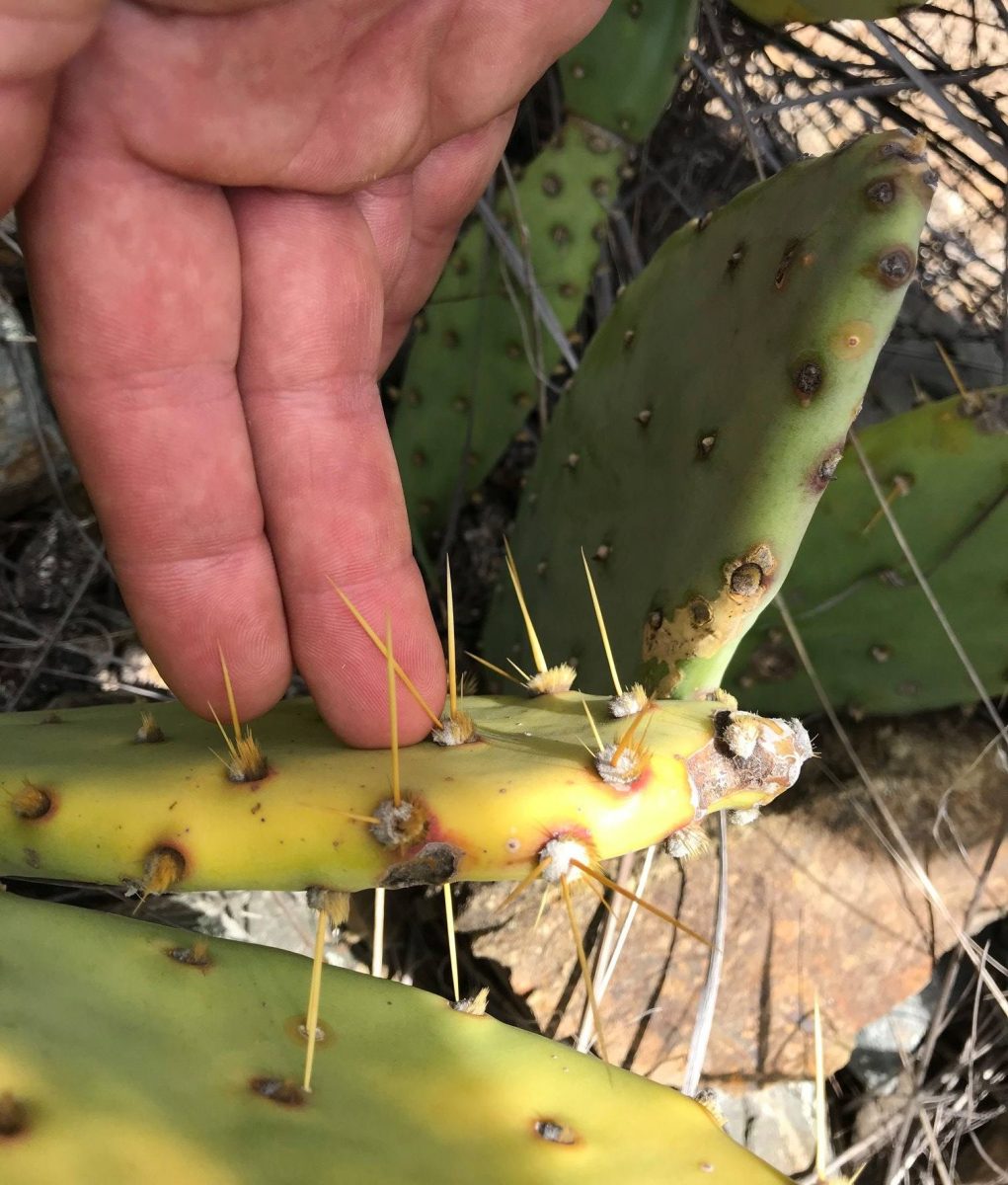
The Prickly Pear is an invasive weed from Central America. Photo: ACT Parks and Conservation Service / Facebook.
A new tactic is being trialled in the Molonglo Gorge Nature Reserve as part of efforts to manage the invasive cactus plant Prickly Pear.
A biological control agent is an organism, such as an insect or plant disease, that is used to control a pest species.
Cochineal insects (Dactylopius opuntiae) have been chosen as the Territory’s biological control agent to get rid of the weed.
Environment Minister Rebecca Vassarotti said it was vital the Prickly Pear was eliminated from Canberra’s ecosystem.
“If left unchecked, an outbreak of Prickly Pear has the potential to form a dense impenetrable patch of shrubs with spines that can cause injury to native animals and wildlife, harbour pest animals and reduce land productivity,” she said.
“The use of a biocontrol agent has proved extremely successful in NSW and Victoria and significantly reduces the requirement for chemical treatments.”
The Prickly Pear is a declared pest plant under the Pest Plants and Animals Act 2005 and poses a serious threat to local ecosystems and landscapes.
Cochineal insects specifically target the invasive weed without impacting native species, and this will be the first time they’re used in the ACT.
“Trials of these insects in Australia to effectively target Prickly Pear date back 90 years in Queensland,” Ms Vassarotti said.
“They are a proven, safe and successful biocontrol agent that will be hugely beneficial here in the ACT.
“The trial of a biocontrol agent is a significant step towards eradicating the pest species in the ACT, and I encourage all Canberrans to report possible sightings.”
The insects are a species of scale insect that form clusters of white wax all over the plant and suck its sap, which impacts on the production of prickly pear fruit and clodade (modified stems covered in spines).
The ACT Government invested $5.8 million to protect, conserve and restore Canberra’s natural environment in the 2022-23 budget.
This has enabled additional resources to undertake weed eradication work across the Territory, as well as expanding the vertebrate and rabbit control programs.
The ACT has a number of invasive plant species, including St John’s Wort, serrated tussock, Chilean needlegrass, African lovegrass and blackberries.
Sightings of invasive species can be reported on the Canberra Nature Map or by calling Access Canberra on 13 22 81.














